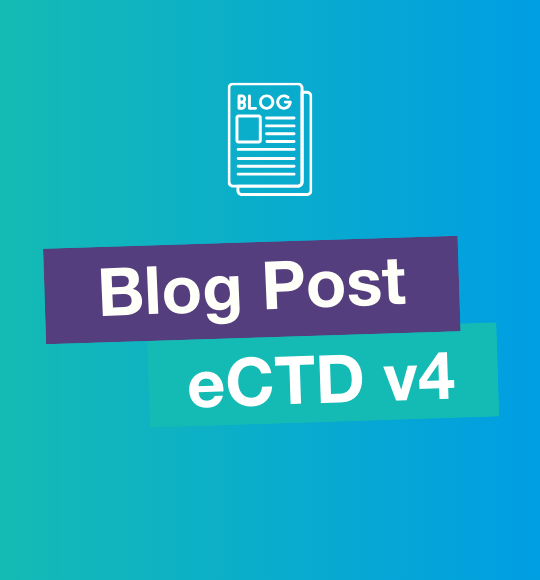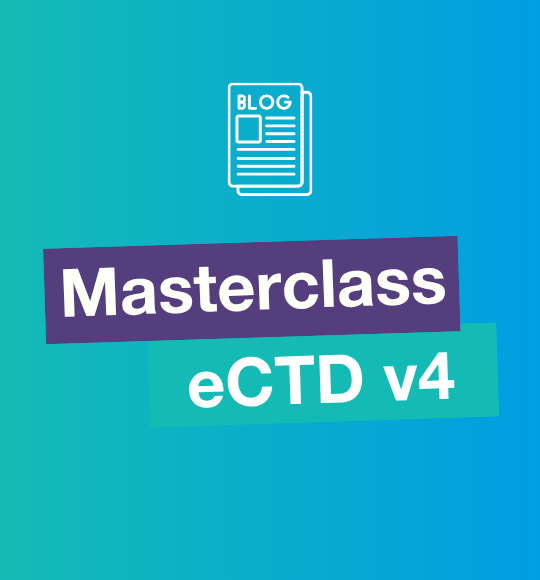
Navigating the Transition Between eCTD v3.2 and eCTD v4
The upcoming transition from electronic Common Technical Document (eCTD) version v3.2 to version v4 is one of the most significant technological changes in the world of submission management. The life science industry and the health authorities can ease this transition process by understanding the key differences and preparing strategies for a smooth transition to eCTD v4. In this blog post, you will find a comprehensive guide on how to approach the successful transition from eCTD v3.2 to eCTD v4.
Understanding eCTD: A Brief Overview
The eCTD is an internationally recognized standard for the submission and assessment of regulatory applications between life science and health authorities. It allows for the electronic submission of documents, enabling a more streamlined and efficient review process. eCTD v3.2 has been the standard for many years, while eCTD v4 is new in its implementation and lays a strong foundation in the digital world; by leveraging structured data and opening possibilities for innovation, this new standard brings many advantages.
Key Differences Between eCTD v3.2 and eCTD v4
- Structure and Organization - Regional vs. Global Structure
- XML Structure – Pre-defined vs. Flexibility
- Information Processing - Document vs. Data Centric
- Transition - Traditional need for Baseline vs forward compatible life cycle management
If you would like to learn more about the differences between eCTD v3.2 and eCTD v4 and what they mean for your daily work, please read the dedicated blog post, where we discuss everything in detail.
8 Steps for a Smooth Transition from eCTD v3.2 to eCTD v4
Step 1: Understanding the Differences
- Invest in education - there is a lot of information available and experts who are ready to put it into the right context.
- Review the ICH Guidance document and the eCTD v4 specification documents.
- Understand key differences, such as the introduction of a more flexible structure, improved lifecycle management, and enhanced data management capabilities.
- Enhanced use of XML and improved metadata handling.
- Better support for electronic submissions and data integrity.
- Introduction of new modules for better organization.
Step 2: Analyze Current Processes and Systems
- Understand the impact of eCTD v4 on your organization’s business processes and systems – it impacts several departments, and they need different things.
- Evaluate your current eCTD v3.2 submission processes and systems.
- Identify gaps in compliance and functionality when compared to eCTD v4 standards.
- Catalog all existing submissions, their formats, and any dependencies or connections to other systems.
Step 3: Develop a Transition Plan
- Before you start this important process, take a moment to remember what you are doing this for. Your personal purpose will take you very far in this endeavor.
- Form a cross-functional team that includes regulatory affairs, IT, quality assurance, and project management.
- Have a close look at your regulatory strategy and keep your organization’s objectives in mind. Aligning both with your journey towards eCTD v4 ensures responsible use of your resources.
- Establish a realistic timeline for the transition, including milestones and deadlines. Include the unexpected in your planning
- Estimate costs for software upgrades, training, and additional resources needed for the transition. Include internal as well as external costs over different time spans.
Step 4: Training and Development
4.1 Training Programs:- Develop training programs for relevant staff on eCTD v4 standards, including regulatory and technical aspects.
- Consider both in-house training and external workshops or webinars.
- Create or update standard operating procedures (SOPs) to reflect new processes and requirements.
- Create and/or provide access to eCTD v4 resources, guides, and best practices to your staff.
Step 5: System and Process Updates
- Implement necessary upgrades to your eCTD publishing software or transition to a new system that supports eCTD v4.
- Work with your vendor to have a plan to transition eCTD v3 and eCTD v4 – Forward Compatibility, so that you can have a seamless implementation in alignment with regional timelines.
Step 6: Implementation and Submission
- Consider a pilot submission using eCTD v4 to test the new processes and receive feedback from regulatory authorities.
- Once the pilot is successful, transition fully to eCTD v4 for all future submissions.
- Establish a feedback mechanism to continually improve processes and address any challenges encountered during the transition.
Step 7: Regulatory Interaction
7.1 Engage with Regulatory Authorities:- Address regulatory authorities to understand their timelines and requirements regarding eCTD v4 submissions.
- Seek guidance or clarification on any specific concerns or challenges.
- Stay informed about any changes or updates in regulatory requirements related to eCTD v4.
Step 8: Post-Implementation Review
-
-
-
- Assess the overall success of the transition, including time, cost, and quality metrics.
- Gather feedback from the team and any stakeholders involved.
-
-
- Document the lessons learned throughout the transition process to improve future initiatives.
- Scan the Horizon: eCTD v4 has arrived now, but this is not the end of regulatory processes and standards. Today’s solutions might have to be adapted tomorrow.
- Stay proactive about potential future updates to eCTD standards and prepare for ongoing training and system upgrades.
The transition from eCTD 3.2 to eCTD 4.0 presents both challenges and opportunities for organizations in the pharmaceutical and biotechnology sectors. By understanding the key differences and adopting strategic approaches for a smooth transition, you can ensure compliance with regulatory requirements while enhancing the efficiency of your submission processes. Embrace the change and leverage the benefits of eCTD 4.0 to improve your regulatory submissions and ultimately contribute to the delivery of safe and effective therapies to patients.
If you are looking for a trustworthy partner who brings not only a lot of technological expertise to the table but is also close to national health authorities and involved in the creation of new standards, please do contact us anytime. We are happy to go on this journey with you!
FAQs about the transition from eCTD v3 to eCTD v4:
1. What big changes can we expect with eCTD v4 compared to eCTD v3?
With eCTD v4, you’ll notice some significant upgrades: The submission structure is more streamlined, making it easier to follow. It also leverages XML technology, allowing for more flexible and dynamic data representation. You will need to use a dedicated viewing software for eCTD v4, which was not necessary for v3. Plus, you’ll have access to new document types with richer metadata, which adds more context to your submissions. Overall, the process is more efficient, simplifying updates and making package maintenance easier.
2. How can our organization prepare for the transition to eCTD v4?
To get ready for the switch to eCTD v4, start by taking a close look at your current practices - a gap analysis. Assess what you have in place and identify what needs to change. Develop a clear plan for the transition that outlines the steps you’ll take. Don’t forget to invest in training for your team to ensure everyone is on the same page, and check that your existing tools are compatible with the new standards.
3. What changes should we expect in the submission process with eCTD v4?
The submission process is set to become much more user-friendly with eCTD v4. You’ll find it easier to make updates and keep your submission packages in order. The improvements also enhance data integrity and support electronic submissions more effectively, which ultimately helps lighten the load for regulatory authorities.
4. What do we need to think about when migrating data from eCTD v3 to eCTD v4?
Migrating data is a crucial step, and it requires thoughtful planning to ensure everything remains compliant and intact. You’ll want to prepare your data for the transfer and validate it throughout the process. Conducting thorough testing is essential to confirm that the new systems align with regulatory standards.
5. Are there any challenges we might face while transitioning to eCTD v4?
Like any big change, moving to eCTD v4 can come with its own set of challenges, such as compliance risks or compatibility issues with your current systems, raising awareness within your organization. However, with careful planning, thorough training and choosing the correct partnerships, you can significantly reduce these risks. Think of this transition as an opportunity to improve and elevate your submission processes as well as leverage structured data from your Regulatory Information Management (RIM) ecosystem.
6. Where can I find more information about eCTD v4?
If you’re looking for more detailed insights on the differences between eCTD v3 and eCTD v4, along with tips for a successful transition, check out [LINK: What are the Differences between eCTD v3 and eCTD v4? - A Comprehensive Guide]. It’s a great resource to help you navigate this change!
.png)


